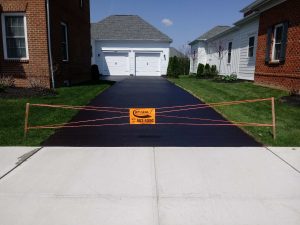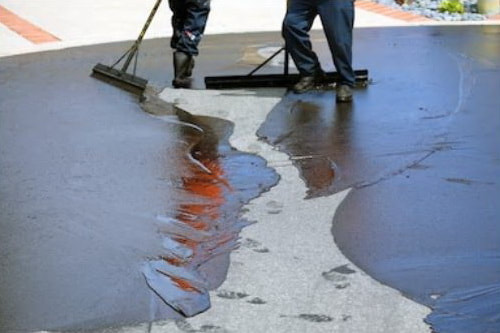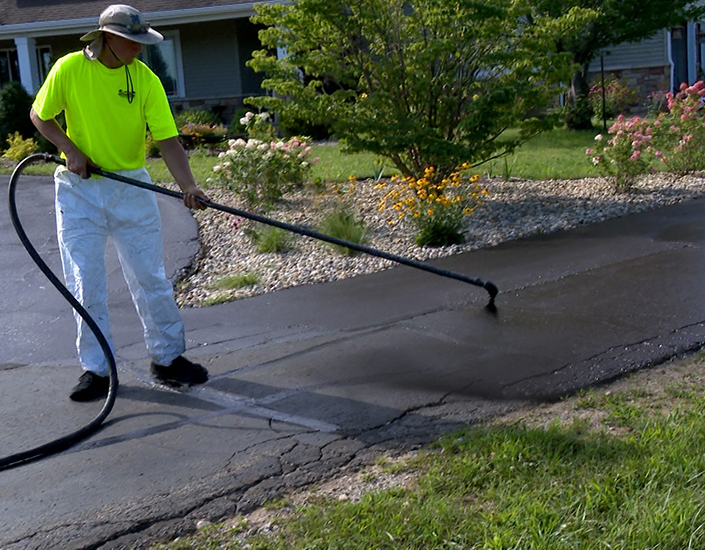Let loose the Prospective: Regrading and Asphalt Sealing for Business Spaces
Hot Mix Asphalt: A Sustainable Solution for Pavement
Hot Mix Asphalt (HMA) has arised as a leading sustainable choice for sidewalk options, providing a myriad of ingenious modern technologies and environmental benefits. As the demand for green construction practices expands, exploring the subtleties of HMA's sustainability can give beneficial insights into the future of pavement options.
Ecological Benefits of Hot Mix Asphalt

Furthermore, Warm Mix Asphalt helps to alleviate city warmth island effects. Its dark shade absorbs sunshine, decreasing the quantity of warm mirrored back right into the environment contrasted to lighter-colored sidewalks. This can reduce ambient temperatures in metropolitan locations, decreasing the demand for cooling and inevitably decreasing power intake.
In addition, Warm Mix Asphalt adds to boosted stormwater administration. Its porous nature allows water to infiltrate the sidewalk and reenergize groundwater supplies, reducing drainage and the risk of flooding. These ecological benefits make Warm Mix Asphalt a lasting selection for paving highways and roads.
Power Efficiency in HMA Manufacturing
Is power effectiveness an essential factor in the manufacturing of Warm Mix Asphalt (HMA)? Energy plays a considerable role in the manufacturing of HMA, affecting both price and environmental sustainability. One essential aspect of power performance in HMA manufacturing is the use of warm mix asphalt (WMA) technologies.
Furthermore, improvements in plant innovations have caused even more energy-efficient HMA production processes. Modern plants are developed with functions like recycled asphalt pavement (RAP) handling capabilities, efficient burner systems, and enhanced insulation, all adding to energy savings. By optimizing energy usage in HMA manufacturing, the sector can decrease its carbon footprint while maintaining premium pavement materials. Energy efficiency is, consequently, a vital factor to consider in making sure the sustainability of Warm Mix Asphalt manufacturing.
Recyclability of Warm Mix Asphalt
The recyclability of Hot Mix Asphalt (HMA) is a crucial element of its sustainability and lasting ecological influence. HMA is just one of the most recycled products in the USA, with over 100 million bunches of redeemed asphalt pavement (RAP) being reused each year in brand-new pavement building and construction. Recycling HMA offers numerous ecological benefits, such as reducing the need for virgin products, lowering energy consumption throughout production, and reducing the amount of waste sent out to landfills.
The procedure of reusing HMA entails grating the existing sidewalk, crushing it right into smaller items, and mixing it with new accumulation and asphalt binder to create a recycled mix. This recycled mix can typically execute as well as or even far better than traditional HMA, while needing fewer resources and producing lower greenhouse gas discharges. By including RAP right into brand-new pavement tasks, roadway companies can preserve natural deposits, lower expenses, and minimize the ecological impact of road building and construction and upkeep tasks. Generally, the recyclability of HMA plays a significant duty in promoting lasting methods within the pavement industry.

Long-Term Efficiency of HMA
Asphalt pavements demonstrate durability and strength over an extensive period, reflecting the lasting efficiency of Hot Mix Asphalt (HMA) The durability of HMA can be credited to its capacity to stand up to rush hour lots, extreme weather, and the effects of aging. Researches have actually revealed that well-designed and correctly constructed HMA sidewalks can last for two decades or more with regular maintenance. The secret to making the most of the long-lasting performance of HMA exists in utilizing premium products, adhering to finest techniques in building and construction, and executing effective maintenance approaches. Appropriate drain, routine examinations, and prompt repair services are necessary for protecting the architectural honesty of HMA sidewalks over time. Additionally, innovations in HMA innovation, such as making use of polymer-modified binders and cozy mix asphalt, have additionally enhanced the sturdiness and longevity of HMA sidewalks. By prioritizing quality construction and upkeep methods, HMA continues to show itself as a sustainable and cost-effective option for durable pavement facilities.

HMA: Sturdiness and Sustainability
Demonstrating both durability and sustainability, Warm Mix Asphalt (HMA) has actually ended up being a keystone in the building and construction of durable pavement infrastructures - commercial parking lot paving. HMA's toughness comes from its ability to endure heavy loads, extreme weather, and high traffic quantities, making it a trusted choice for roadways, freeways, and flight terminal paths. The composition review of HMA, which generally includes accumulations, binder, and filler, plays a vital role in improving its long life and resistance to tear and use
Moreover, HMA's sustainability exists in its recyclability and energy-efficient production procedure. The capacity to reuse reclaimed asphalt sidewalk (RAP) in brand-new HMA blends minimizes the demand for virgin products and reduces the ecological influence of pavement construction and upkeep. Furthermore, More Info the power performance of creating HMA depends on its reduced blending temperature levels contrasted to other pavement materials, resulting in lowered energy intake and greenhouse gas emissions.
Final Thought
Finally, hot mix asphalt (HMA) offers a lasting solution for pavement with its ecologically friendly characteristics. HMA's recyclability, energy efficiency in manufacturing, and lasting longevity make it an environment-friendly selection for road building. By conserving all-natural resources, minimizing waste, and lowering greenhouse gas discharges, HMA plays a crucial duty in promoting sustainability in infrastructure advancement. Its capability to mitigate metropolitan heat island results further highlights its value in producing environmentally aware and resilient sidewalk systems.
HMA is one of the most recycled products in the United States, with over 100 million lots of redeemed asphalt pavement (RAP) being reused each year in brand-new pavement building.The procedure of reusing HMA includes crushing the existing pavement, crushing it into smaller items, and blending it with new accumulation and asphalt this contact form binder to create a recycled mix.Asphalt pavements show sturdiness and resilience over an extensive duration, reflecting the long-lasting performance of Hot Mix Asphalt (HMA) In addition, improvements in HMA modern technology, such as the use of polymer-modified binders and warm mix asphalt, have actually better enhanced the longevity and durability of HMA sidewalks. The ability to reuse reclaimed asphalt pavement (RAP) in new HMA blends minimizes the demand for virgin materials and decreases the environmental influence of pavement building and upkeep.